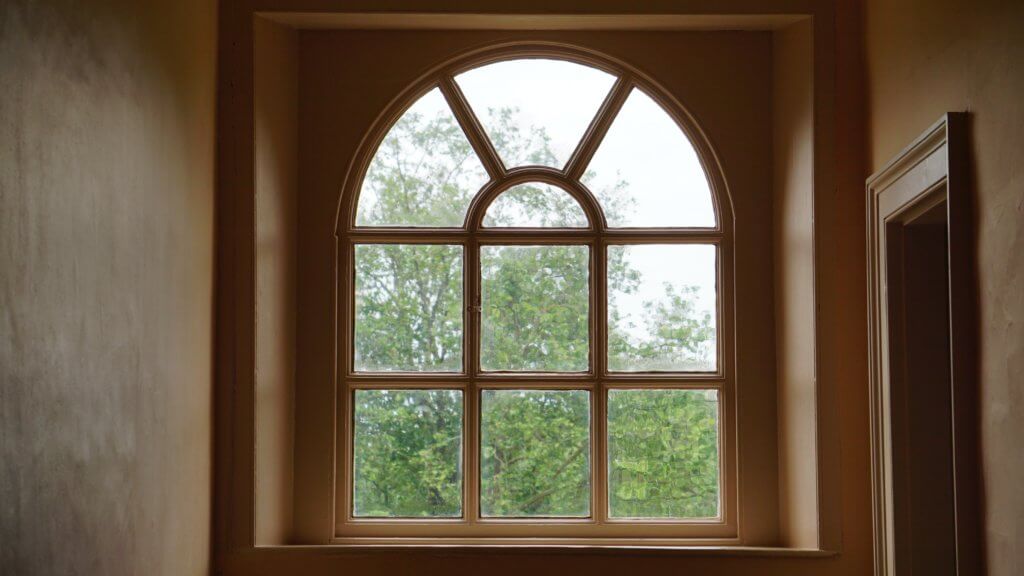When I sat at the counsel table in my first jury trial, there was no Facebook and no iPhone. Ricky Martin was rocketing up the charts with Livin’ La Vida Loca. We nervously awaited the arrival of Y2K, but at least we didn’t have to worry about someone on the jury live-tweeting updates about the trial.
My how times have changed.
Previously on Five Minute Law, we looked at the ethical issues that arise from using social media for opposition research (Part 1), advising clients on their social media use during litigation (Part 2), and interacting with judges on social media (Part 3). In this final Part 4 we look at using social media to research information on members of a jury panel, before and during the trial.
The bottom line: monitor, but don’t communicate, and promptly disclose to the judge and opposing counsel if you discover jurors behaving badly.
Hypothetical 1: Jury Research Before Trial
To illustrate, let’s get back to our favorite fictional non-compete lawsuit, Paula Payne Windows v. Dawn Davis. Paula Payne’s lead counsel, John Laurens, is worried. He’s concerned about jury bias for the “little guy” against the employer. When he gets a list of the jury panel the week before trial, he tells his team “find the ones who think the system is rigged!”
His local counsel, venerable trial lawyer Hank Livingston, drives by the homes of several on the list. Two catch his attention: Marc Horger, a welder who has a “Come and Take It” assault rifle sticker on his massive pickup truck, and Scott Silveri, a freelance journalist who has a “Feel the Bern” sticker on his Prius. “Johnny, you need to get rid of these guys,” he tells Laurens, “they don’t like authority.”
Laurens also finds out that Judge John Lansing has a new program to encourage giving younger lawyers more courtroom opportunities: extra time for jury selection if you let an associate handle it. Laurens summons young associate Phil Hamilton to his office. “Bill,” he says. “It’s Phil, sir.” “Whatever. Phil, you’re handling this voir dire; but first find out everything you can about this jury panel.”
Phil starts by Googling each juror. Then he checks any publicly available info on LinkedIn, Facebook, Instagram, and Twitter. He sees that juror Alex Hart looks good for employers, at least on paper: 45-year old CPA, married with three kids, employed by the same company for 15 years. But Hart once liked a LinkedIn article titled “How Non-Competes are Killing Free Enterprise in America.”
Meanwhile . . .
Maria Reynolds, the lawyer for defendant Dawn Davis, is also snooping. She’s not satisfied with the jury pool’s publicly available social media, so she asks her very attractive legal assistant to start friending male members of the jury pool on Facebook. The assistant gains access to several non-public Facebook profiles by sending vague friend requests.
One thing is clear: these lawyers are walking through an ethical minefield.
Ethics of Jury Research
So, which of these would be an ethical violation?
(A) Phil checking publicly available social media
(B) Hank driving by a juror’s house, if the juror sees him
(C) Phil viewing a juror’s LinkedIn profile, if LinkedIn notifies the juror he did so
(D) Maria’s assistant sending deceptive friend requests
(E) Not investigating the jury pool on social media at all
Let’s start with the most obvious. There is so much wrong with (D), having an assistant friend members of the jury panel. First, a lawyer can’t communicate with a potential juror, period.[1] Second, a lawyer can’t get around this rule by having an assistant or third party do the dirty work .[2] Third, even aside from the prohibition on communicating with a potential juror, a lawyer can’t use deception to gain access to a private social media account.[3]
Avoiding an outright lie does not necessarily solve the third problem. As the Philadelphia Bar Association reasoned, failing to disclose the reason for a friend request is an omission that renders the request deceptive.[4]
It should also be pretty obvious that (A), checking publicly available information on jurors, is generally ok. ABA Formal Opinion 466 (2014) states the consensus view: a lawyer may view a potential juror’s publicly available social media content, as long as the lawyer doesn’t communicate with the juror.
(B) is a little harder. Driving by a juror’s house is not communicating with a juror, but could it be considered “vexatious or harassing”?[5] Driving by one time is probably ok, even if the juror happens to notice the lawyer. Driving by three or four times? That might cross the line.
Answer (C), viewing LinkedIn if the juror becomes aware of it, is more difficult. In Part 1, I opined that this is ok as to witnesses. But contact with jurors is more sensitive, and there is a difference of opinion on whether a lawyer can view a juror’s public social media if the social media platform alerts the juror that the lawyer has done so.
Two New York opinions saw this as an ethical problem. “If a juror becomes aware of an attorney’s efforts to see the juror’s profiles on websites,” the New York County Lawyers’ Association said in its Formal Opinion 743, “the contact may well consist of an impermissible communication, as it might tend to influence the juror’s conduct with respect to the trial.”[6]
Same for the New York City Bar. In Formal Opinion 2012-2 they said it would be a prohibited communication if a lawyer views a juror’s social media knowing that the juror will receive a notification that the lawyer has done so.
But the ABA has a different view. It said in Formal Opinion 466, “[t]he fact that a juror or a potential juror may become aware that a lawyer is reviewing his Internet presence when a network setting notifies the juror of such does not constitute a communication from the lawyer . . .”
The ABA reasoned that the notification is a communication from the social media platform, not the lawyer:
This Committee concludes that a lawyer who uses a shared ESM platform to passively view juror ESM under these circumstances does not communicate with the juror. The lawyer is not communicating with the juror; the ESM service is communicating with the juror based on a technical feature of the ESM. This is akin to a neighbor’s recognizing a lawyer’s car driving down the juror’s street and telling the juror that the lawyer had been seen driving down the street.
Pennsylvania Bar Formal Opinion 2014-300 agreed with the ABA’s position.
I think the ABA got it right on this one, except for using the acronym “ESM.” Why do ethics opinions always have to make up terms that people don’t actually use?
But if you want to take the cautious approach, make sure you only view juror social media if you know the social media platform won’t notify the juror.
Finally, answer (E), not investigating social media at all, is the least tested of these issues. Investigating the social media accounts of the jury panel may be an ethical minefield, but failing to do any investigation could violate a lawyer’s duty of competence. Some will even say that it’s malpractice if a lawyer doesn’t find out what is in the jury panel’s publicly available social media.
And competent representation may also include continuing to monitor jury use of social media after the jury is selected and the trial proceeds.
*UPDATE: The Social Media Subcommittee of the Texas Supreme Court Advisory Committee (affectionately known as SMSTSCAC) weighed in on December 1, 2017. The subcommittee sided with the ABA approach in this memo, recommending the following comment to Texas Disciplinary Rule of Professional Conduct 3.6: “A lawyer’s review of a venireman’s or juror’s website or electronic social media (ESM) that is available without making an access request, is not an improper ex parte communication.” The subcommittee also gave a charitable shout-out to Myspace in footnote 1.
Hypothetical 2: Jury Research During Trial
So let’s get back to our hypothetical non-compete case. Paula Payne’s lawyers strike Horger and Silveri, but Hart somehow manages to get on the jury. Phil Hamilton, the young associate, checks Hart’s Twitter feed after jury selection and sees that he tweeted: “Can’t believe I got picked for jury duty this week. Too much work to do!”
Reynolds, the lawyer for Dawn Davis, is also keeping tabs on social media. She tells her assistant to monitor the public posts of everyone who got on the jury. During the trial, they see a tweet from Hart: “The defense lawyer spent the last hour making the same point over and over. Someone shoot me now!”
Neither lawyer reports Hart to the judge. Phil doesn’t do anything differently, but Reynolds decides to tighten up her next cross exam to make it less repetitive.
So which of these things is an ethical violation?
(A) The lawyers monitoring a juror’s social media without permission from the judge
(B) Phil failing to report Hart’s “too much work to do” tweet
(C) Reynolds failing to report Hart’s “boredom” tweet
(D) Reynolds changing her trial strategy based on Hart’s “boredom” tweet
Answer (A) should not be a problem. Unless the judge has ordered otherwise, the lawyers don’t need to get permission to check what the jury may be saying on social media, and the duty of competent representation may even require that they do so.
(B) is borderline. Hart’s tweet lamenting his selection to the jury doesn’t really comment on the case itself. On the other hand, maybe it provides a clue about Hart’s state of mind and suggests an attitude about the lawsuit?
Failing to report an innocuous statement like this doesn’t strike me as an ethical violation, but the safer course would be to report it to the judge and opposing counsel. Plus, if the judge admonishes the juror for a harmless tweet at the start of the trial, it may prevent a more damaging tweet later.
(C) and (D) are likely to get Reynolds in hot water. If a lawyer finds that a juror has commented on something substantive about the case, the lawyer needs to promptly disclose that fact to the judge and opposing counsel.[7] And failing to disclose is even more dangerous if the lawyer uses the information to try to gain some advantage in the trial.[8]
Now that would be livin’ la vida loca.
*UPDATE: In its December 1, 2017 memo, the Social Media Subcommittee of the Texas Supreme Court Advisory Committee noted this issue: “Should counsel, in undertaking the permissible review of a venire member’s or juror’s ESM, discover improper conduct by that individual, what is the obligation to advise the court?” The subcommittee made no recommendation but did cite two disciplinary rules: 3.03(a)(2) (“A lawyer shall not knowingly fail to disclose a fact to a tribunal when disclosure is necessary to avoid assisting a criminal or fraudulent act”) and 3.06(f) (“A lawyer shall reveal promptly to the court improper conduct by a venireman or a juror . . . of which the lawyer has knowledge”).
______________________

These are his opinions, not the opinions of his firm or clients, so don’t cite part of this post against him in an actual case. Every case is different, so don’t rely on this post as legal advice for your case.
[1] Texas Disciplinary Rule of Professional Conduct 3.06(b) (“Prior to discharge of the jury from further consideration of a matter, a lawyer connected therewith shall not communicate with or cause another to communicate with anyone he knows to be a member of the venire from which the jury will be selected or any juror or alternate juror, except in the course of official proceedings”); see also ABA Model Rule of Professional Conduct 3.5 (lawyer shall not communicate ex parte with a juror or prospective juror unless authorized to do so by law or court order).
[2] New York City Bar Formal Opinion 2012-2 (“Third parties working for the benefit of or on behalf of an attorney must comport with these same restrictions”).
[3] Texas Disciplinary Rule 4.01(a) (lawyer shall not knowingly “make a false statement of material fact or law to a third person”); ABA Model Rule 4.1 (same); see also New York City Bar Formal Opinion 2012-2 (“the attorney must not use deception—such as pretending to be someone else—to gain access to information about a juror that would otherwise be unavailable”).
[4] See Philadelphia Bar Association, Opinion 2009-02 (having a third party send a friend request to a witness “omits a highly material fact, namely, that the third party who asks to be allowed access to the witness’s pages is doing so only because he or she is intent on obtaining information and sharing it with a lawyer for use in a lawsuit to impeach the testimony of the witness”).
[5] See Texas Disciplinary Rule 3.06(a) (lawyer shall not “conduct or cause another, by financial support or otherwise, to conduct a vexatious or harassing investigation of a venireman or juror”).
[6] New York County Bar, Formal Opinion 743 (2011).
[7] ABA Formal Opinion 466 (“if a lawyer discovers evidence of juror or potential juror misconduct that is criminal or fraudulent, the lawyer must take reasonable remedial measures including, if necessary, disclosure to the tribunal”); New York City Bar Formal Opinion 2012-2 (“if a lawyer learns of juror misconduct through a juror’s social media activities, the lawyer must promptly reveal the improper conduct to the court”).
[8] See New York County Bar Opinion 743 (if lawyer learns of jury misconduct on social media, he must not unilaterally act on such knowledge to benefit the client but must promptly bring the misconduct to the attention of the court “before engaging in further significant activity in the case”).




Leave a Comment